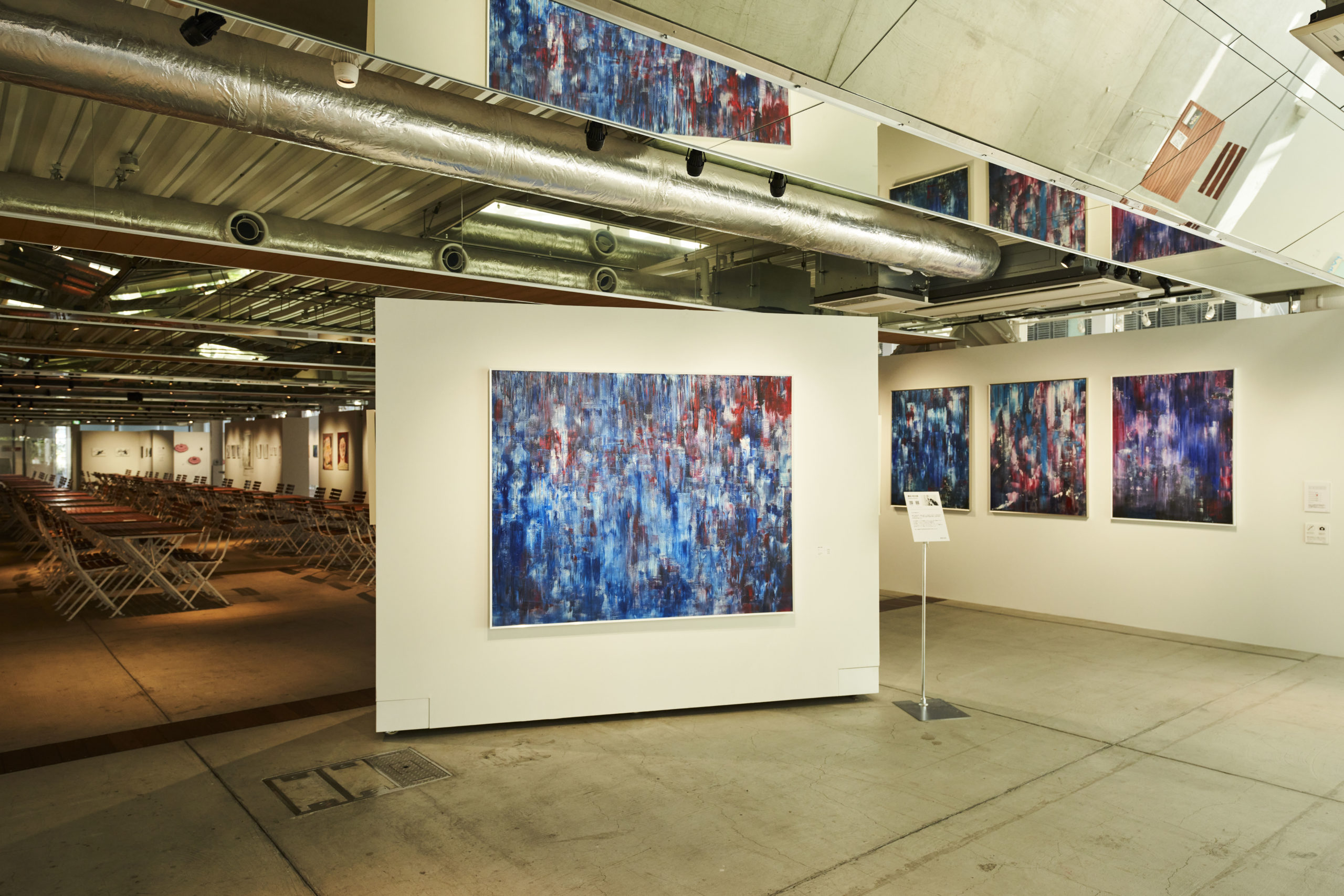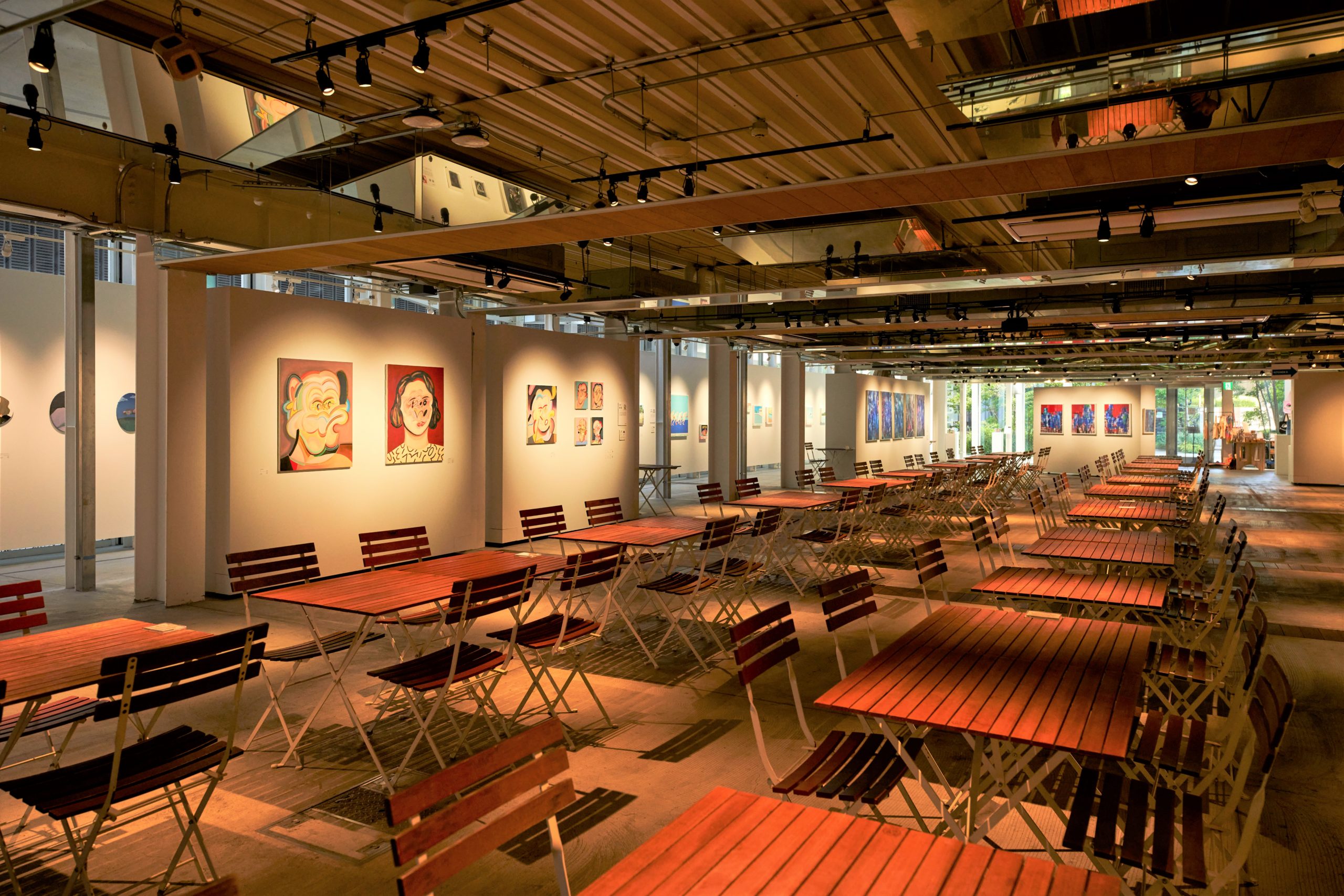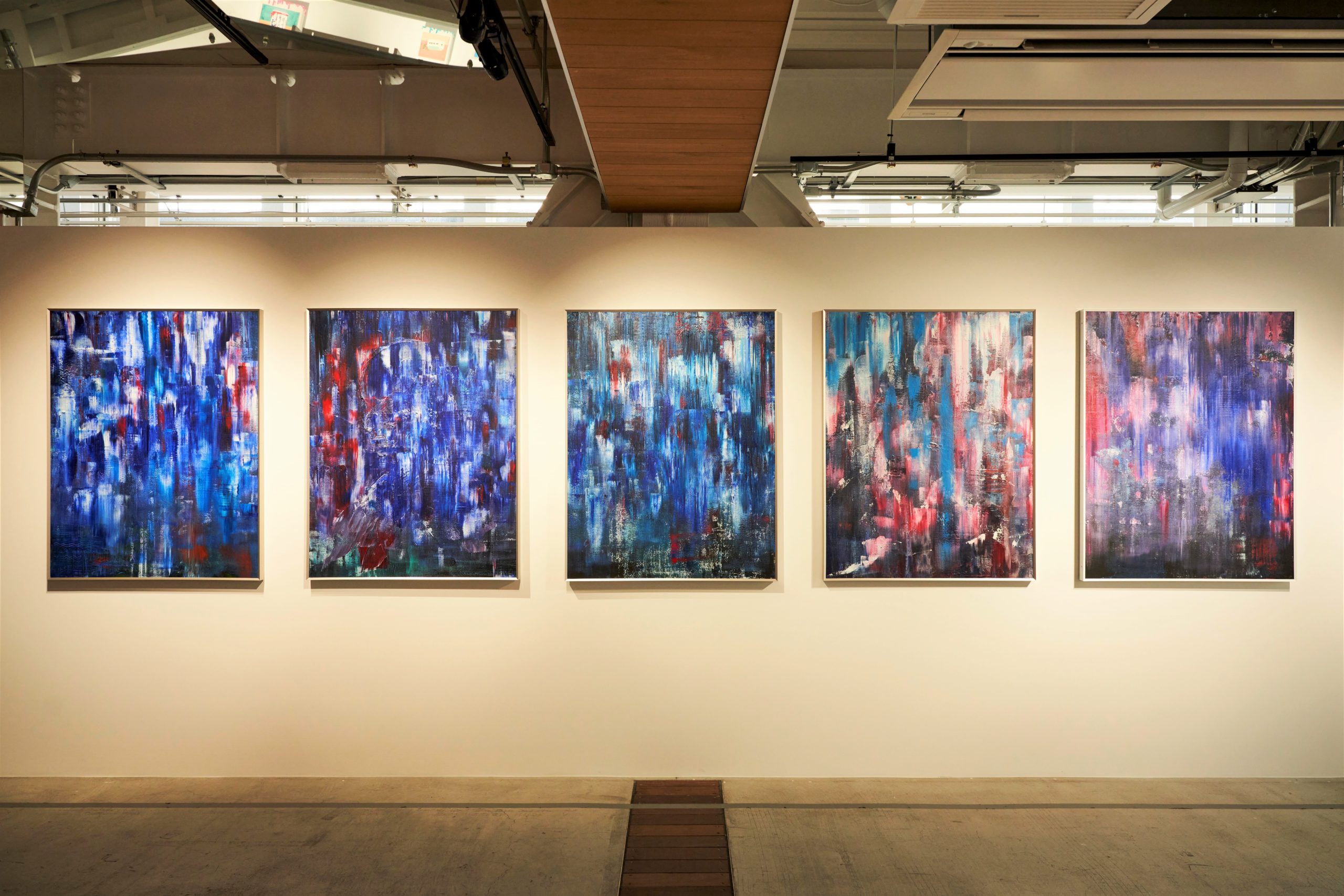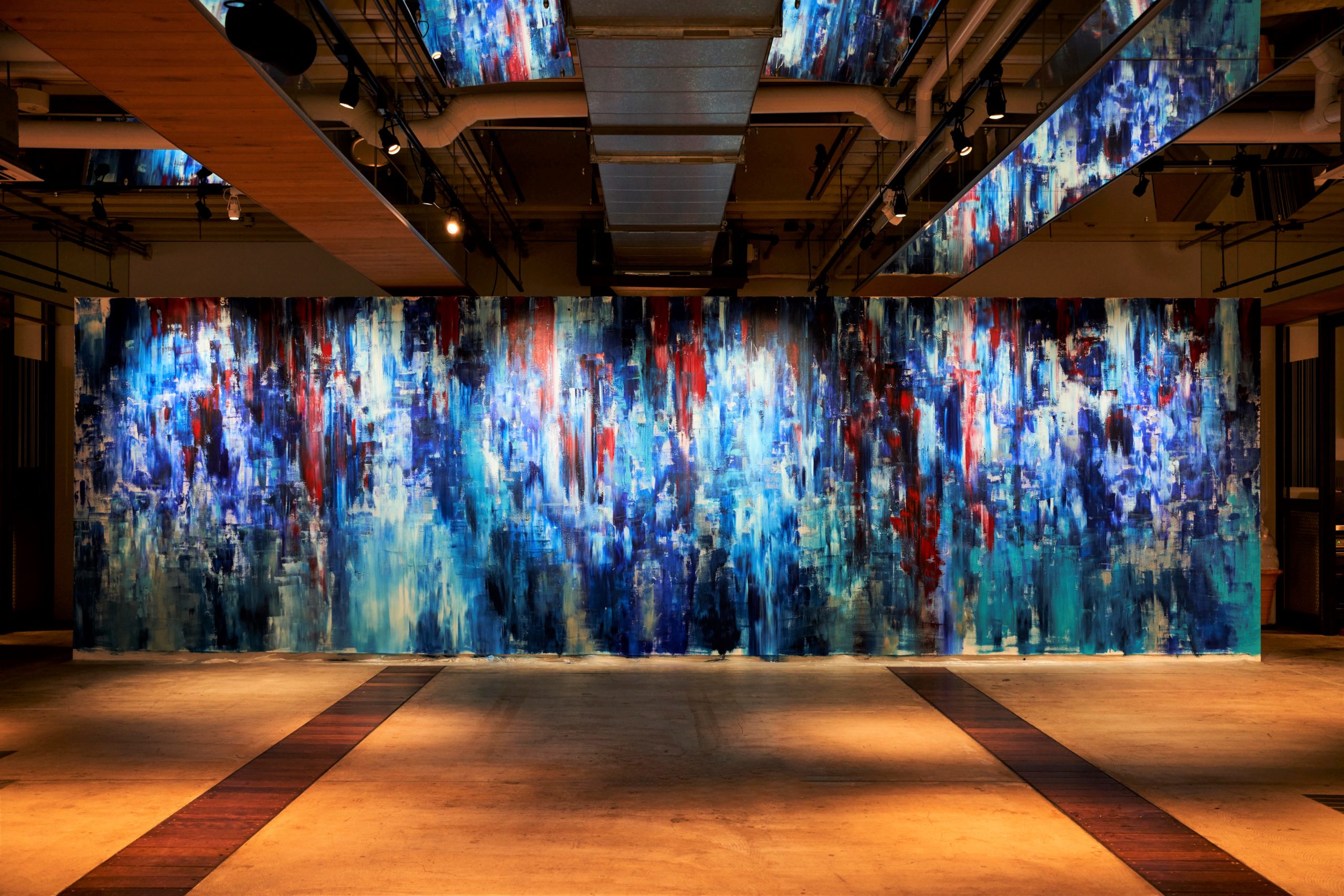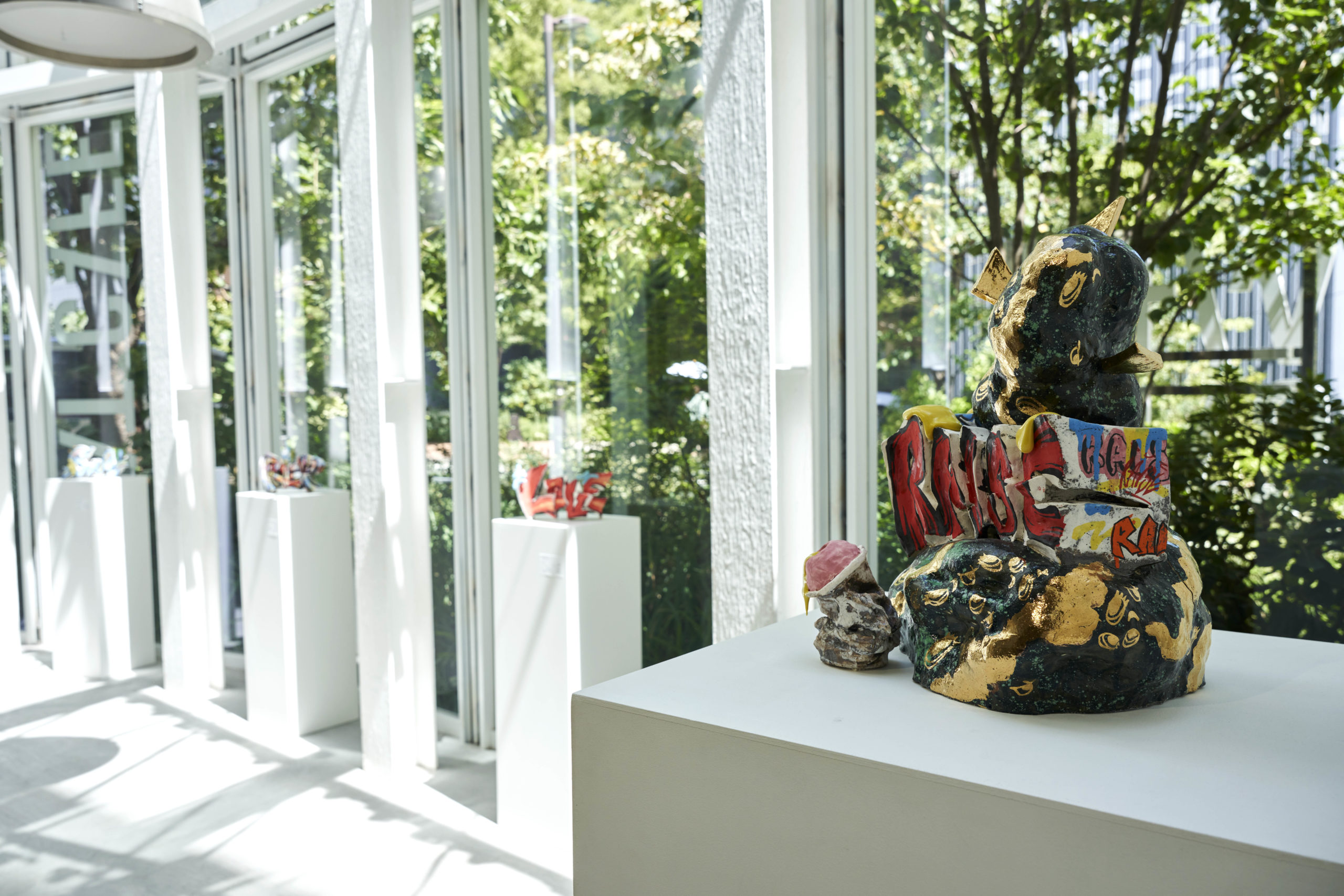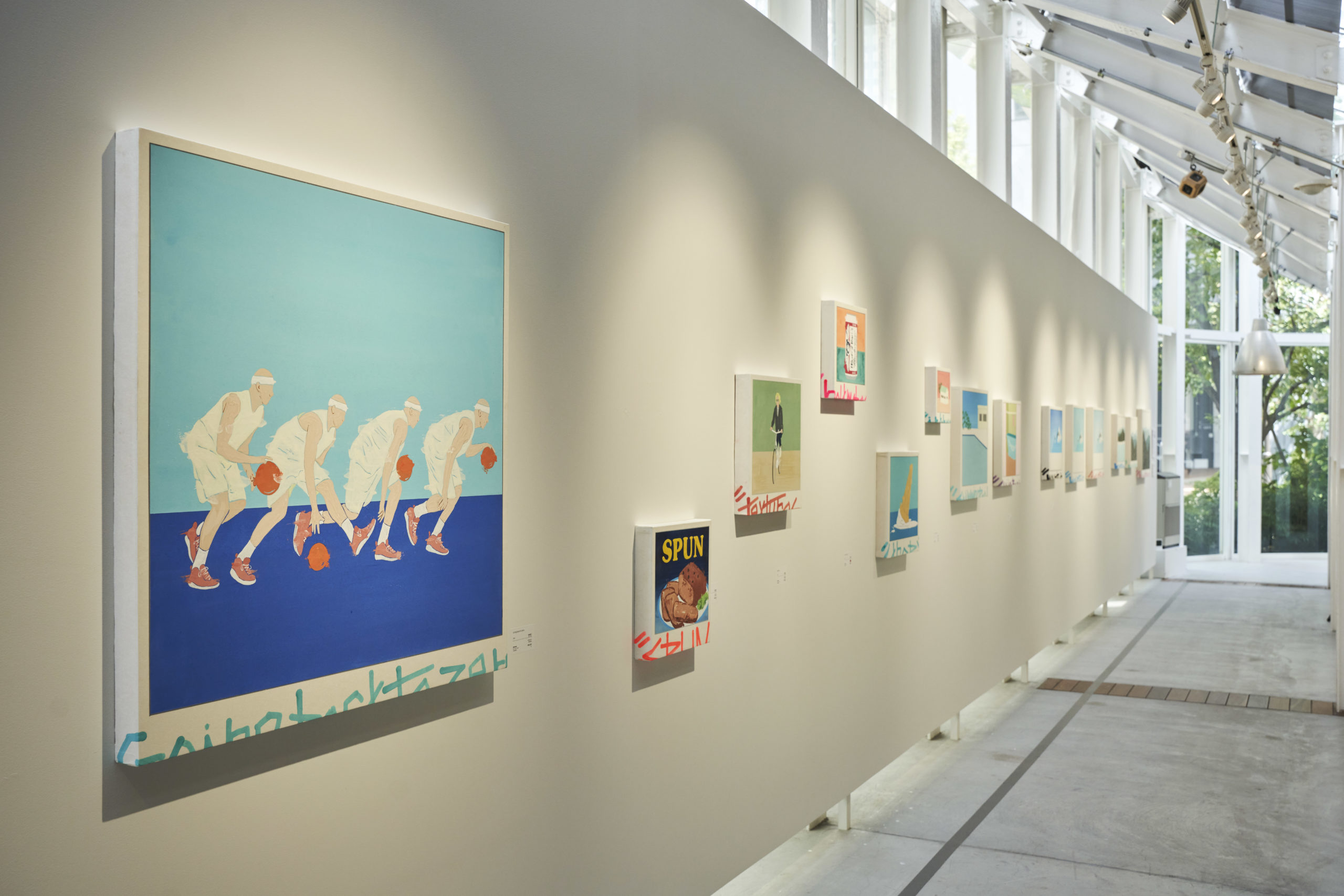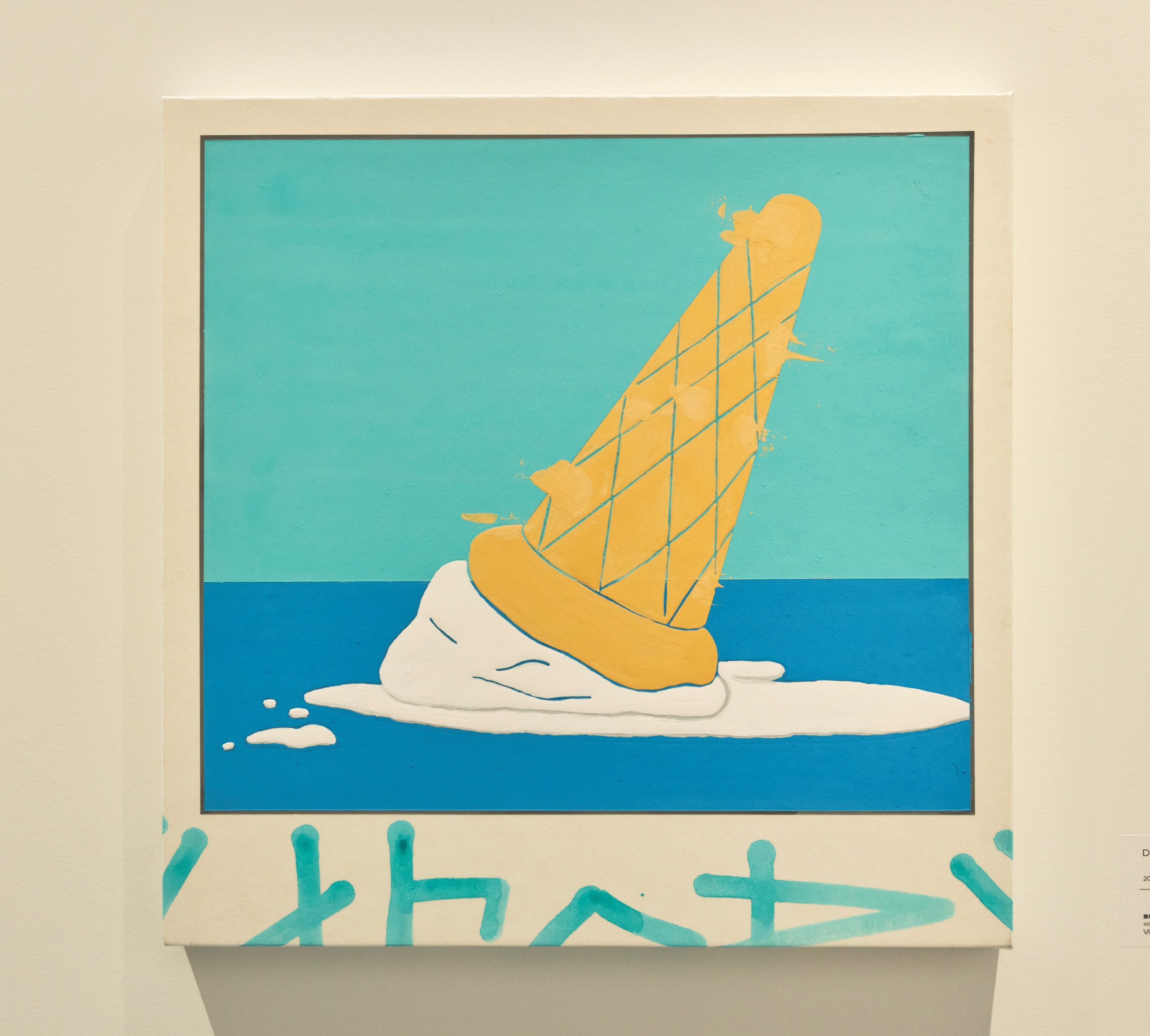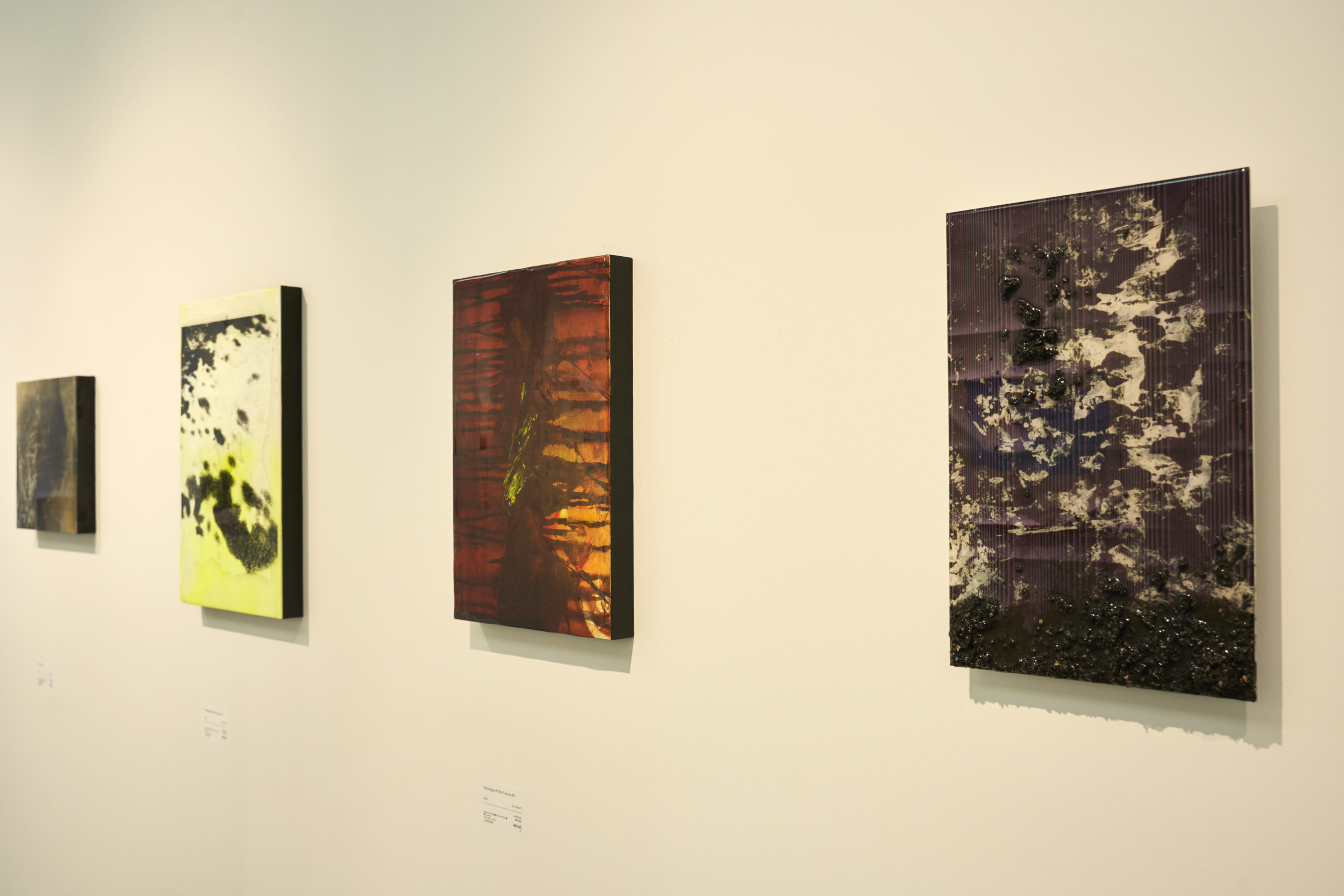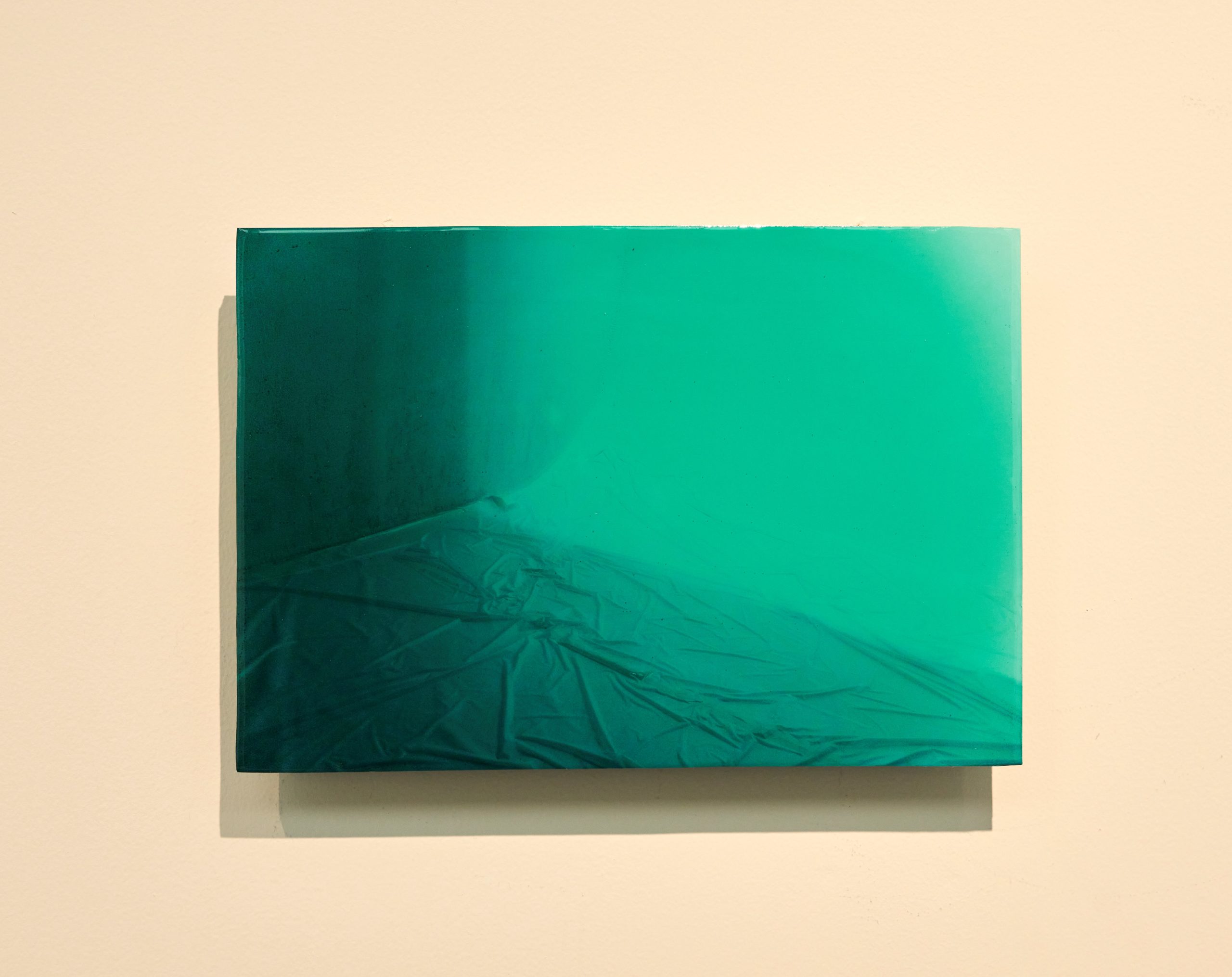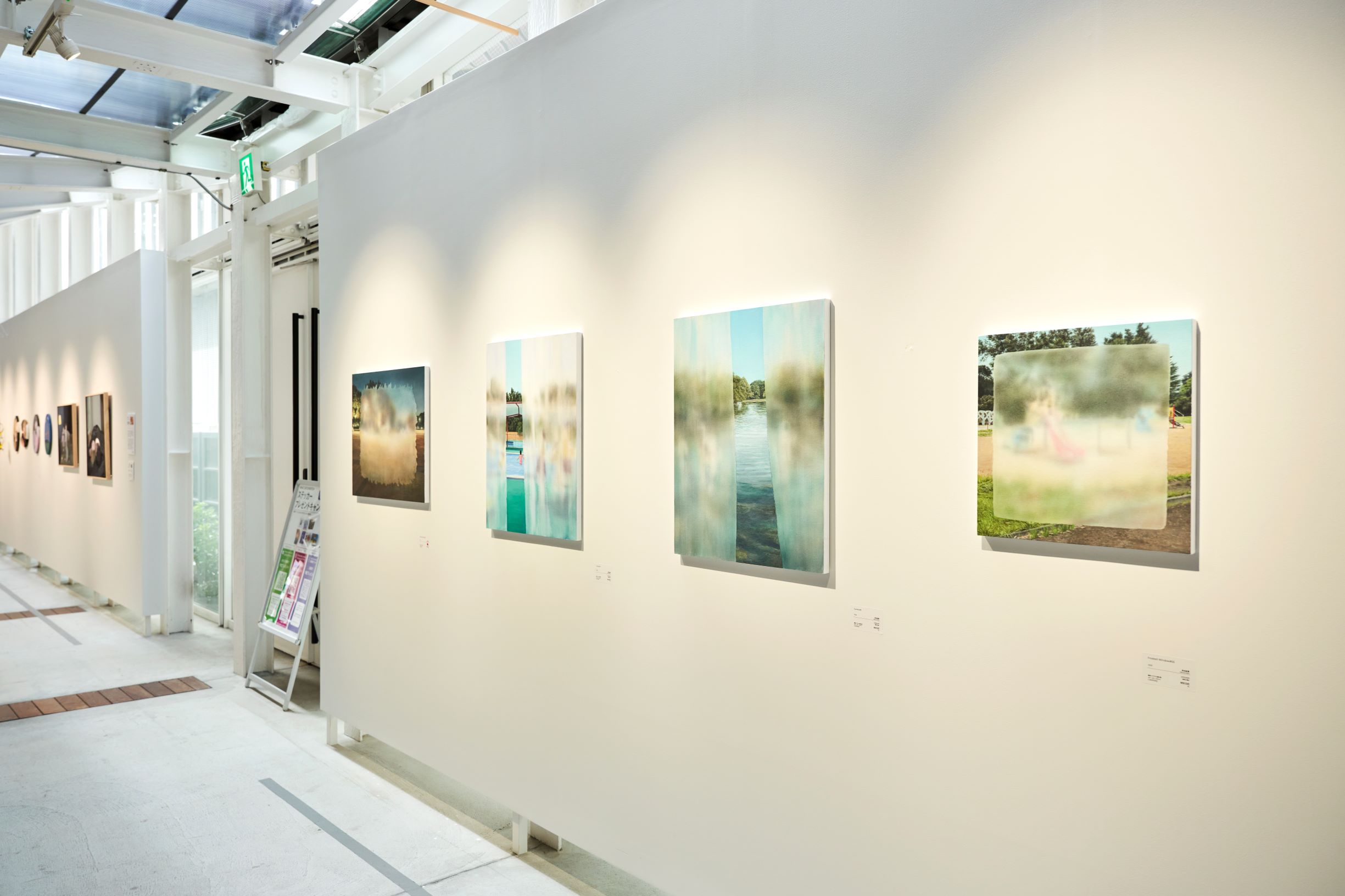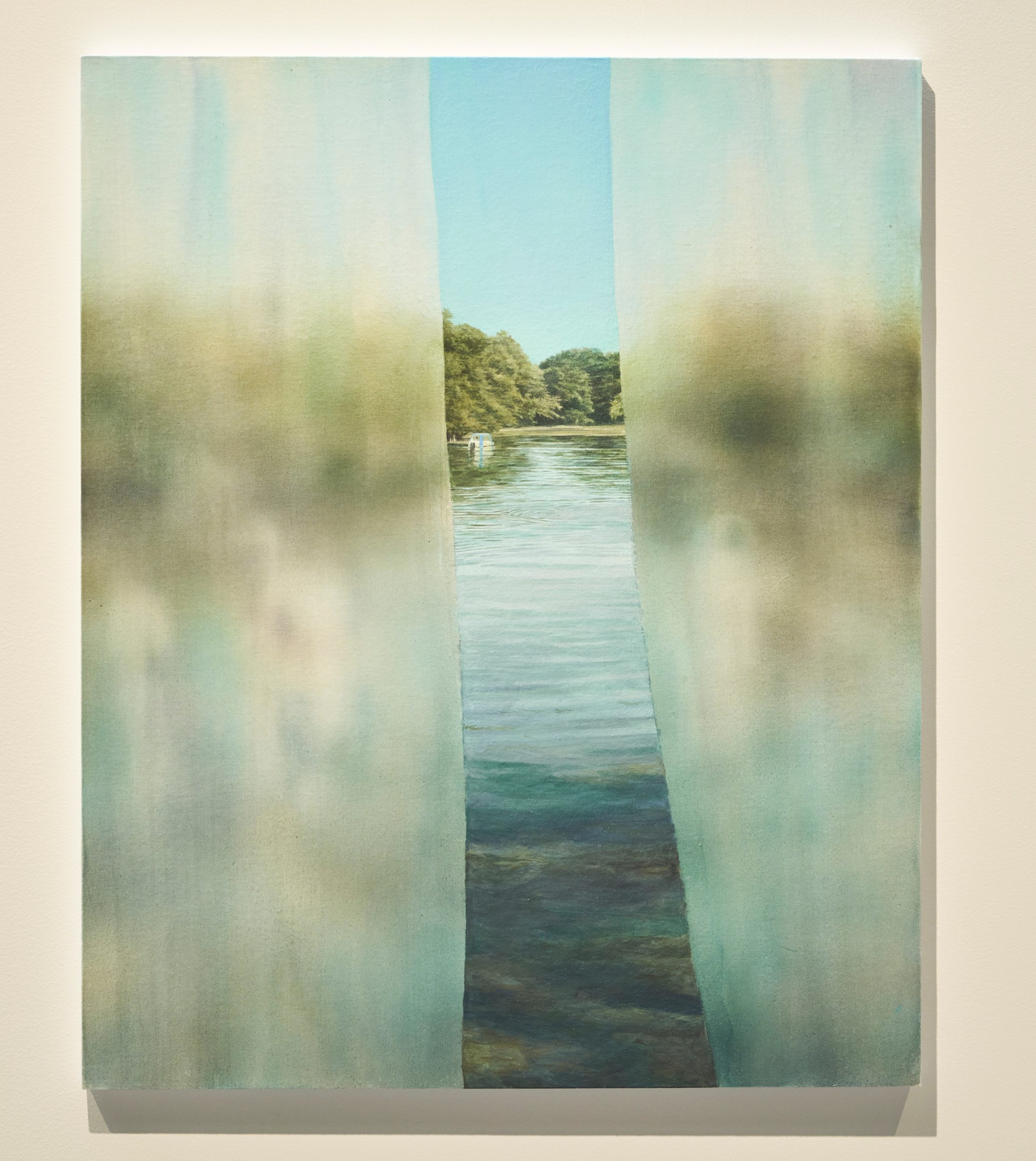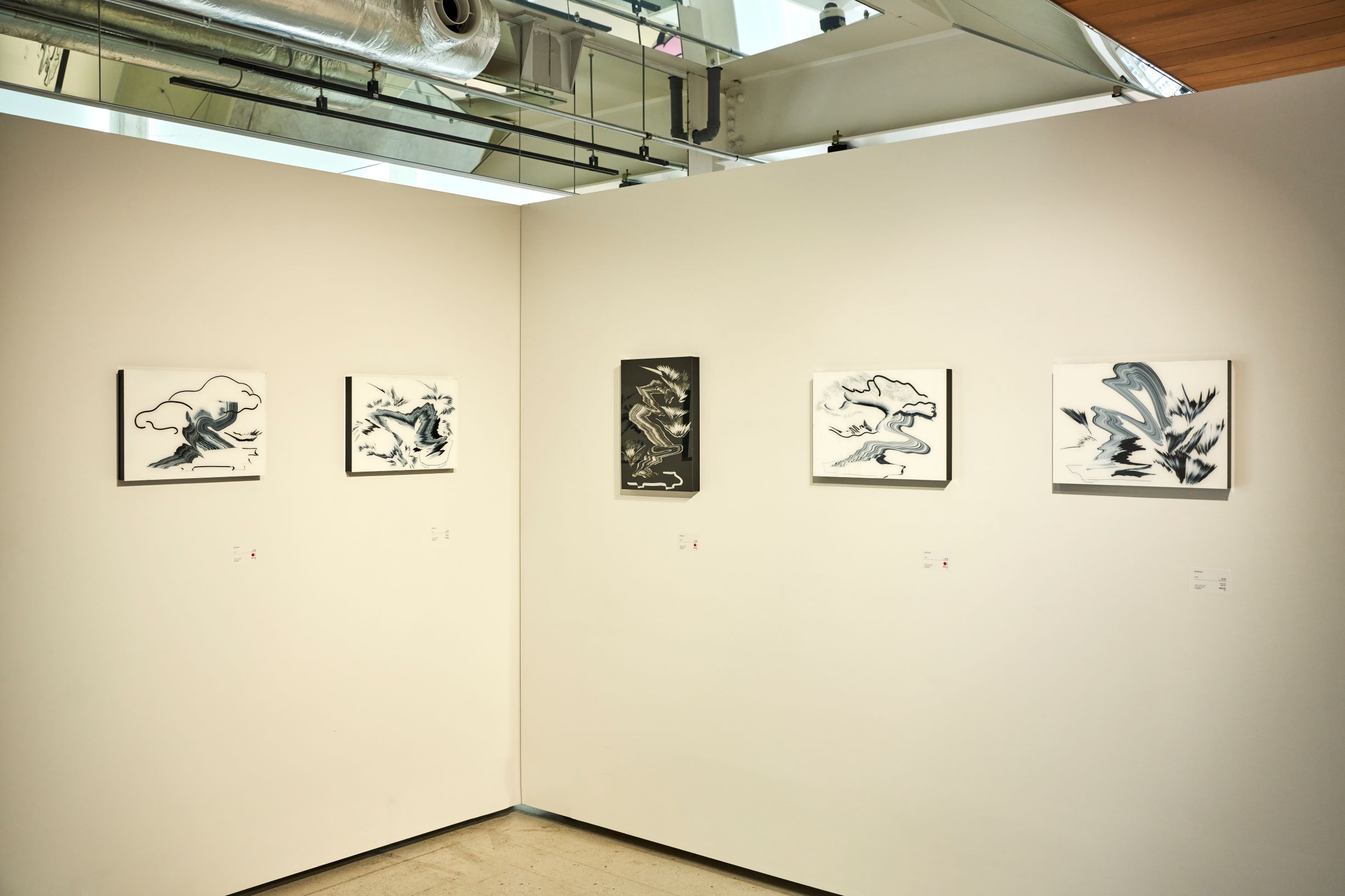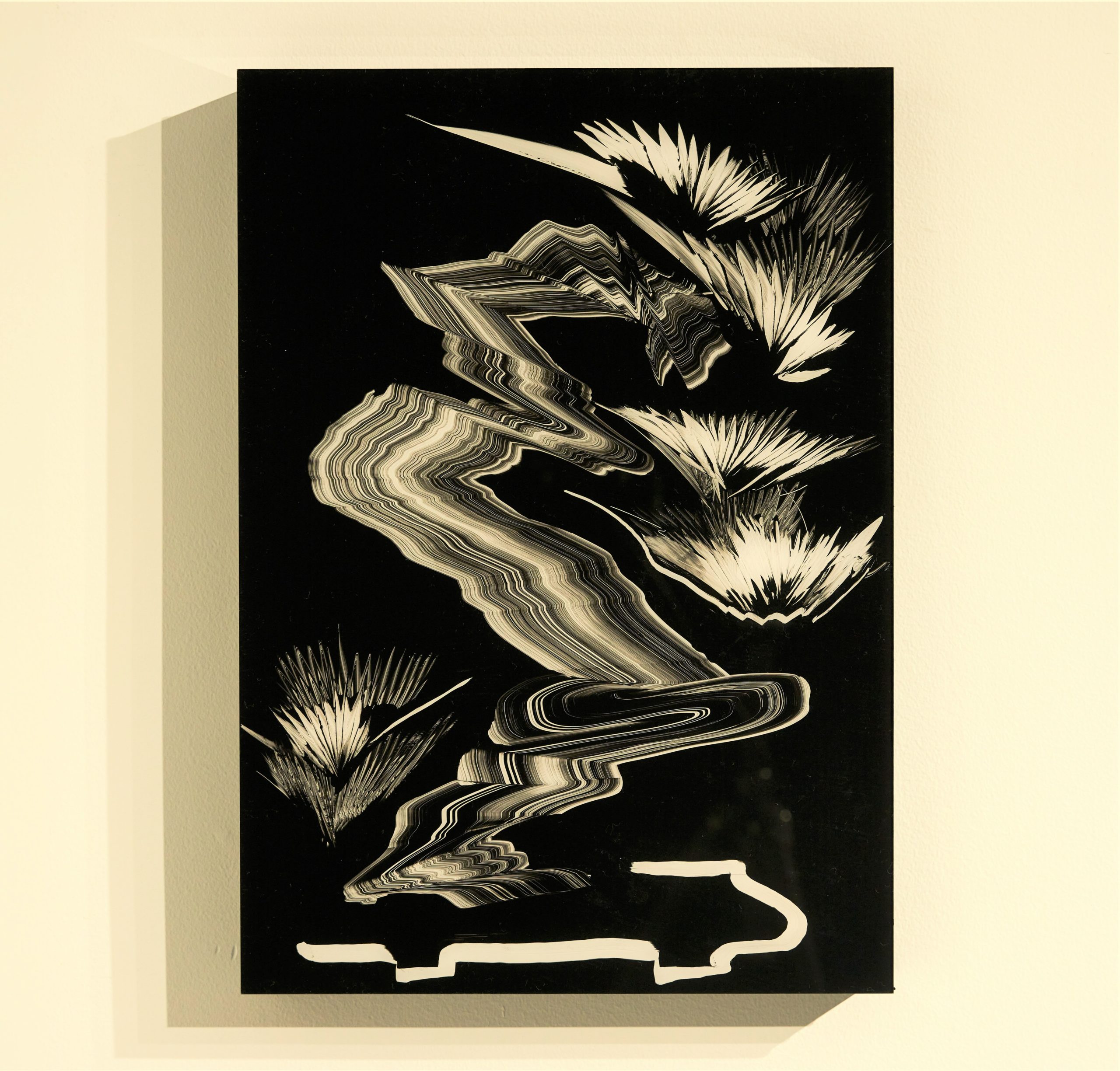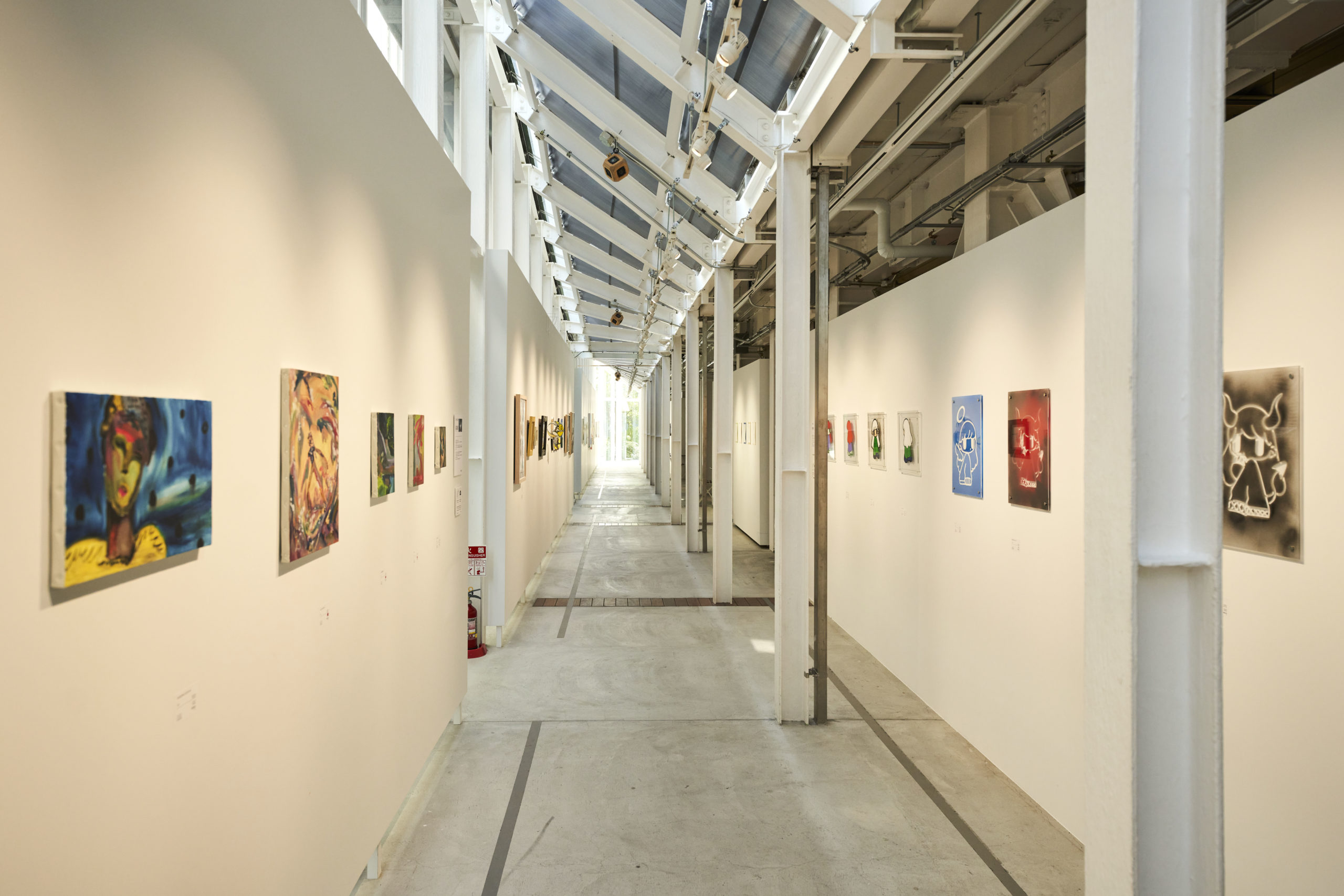展示レビュー
WHAT CAFE EXHIBITION vol.28
WHAT CAFE EXHIBITION vol.28 展示レビュー
WHAT CAFE EXHIBITION vol.28 Review
WHAT CAFE EXHIBITION vol.28 Review
WHAT CAFE EXHIBITION vol.28 Review
2023/09/05 | レビュアー:髙橋雛 レビュアー:Hina Takahashi レビュアー:Hina Takahashi レビュアー:Hina Takahashi
2023 年 8月 25日(金)から 9 月 5 日(火)まで、WHAT CAFEにて、アーティスト14名による作品約100点を一同に展示する「WHAT CAFE EXHIBITION vol.28」が開催されました。展覧会のテーマは「CROSS(横断)」。サブカルチャーと伝統技法、デジタルとアナログ、異世界と現実など、さまざまな世界や分野を横断する作品を展示することで、それぞれの世界を行き来し対話するアーティストたちの感性やパワーを体感できる空間づくりを目指しています。
WHAT CAFE EXHIBITION vol.28, which brought together around 100 works from 14 artists, was held at WHAT CAFE from August 25 (Fri) to September 5 (Tue), 2023. The theme of the exhibition was “Cross.” By displaying artwork across a range of worlds and domains—subcultures and traditional techniques, digital and analog, other worlds and reality—the exhibition aimed to create a space to experience the sensibilities and strengths of artists who communicate across multiple realms.
WHAT CAFE EXHIBITION vol.28, which brought together around 100 works from 14 artists, was held at WHAT CAFE from August 25 (Fri) to September 5 (Tue), 2023. The theme of the exhibition was “Cross.” By displaying artwork across a range of worlds and domains—subcultures and traditional techniques, digital and analog, other worlds and reality—the exhibition aimed to create a space to experience the sensibilities and strengths of artists who communicate across multiple realms.
WHAT CAFE EXHIBITION vol.28, which brought together around 100 works from 14 artists, was held at WHAT CAFE from August 25 (Fri) to September 5 (Tue), 2023. The theme of the exhibition was “Cross.” By displaying artwork across a range of worlds and domains—subcultures and traditional techniques, digital and analog, other worlds and reality—the exhibition aimed to create a space to experience the sensibilities and strengths of artists who communicate across multiple realms.
展示室に設置されているQRコードからは、「心が震えるアートの話をしよう」をテーマに活動する「耳で聴く美術館avi」がアートナビゲーターを務める無料の音声ガイドを聞くことができます。パワフルな作品たちに心踊らせながらも、優しい声に一歩ずつ導かれるように歩みを進めて見てはいかがでしょうか。
Visitors are able to use QR codes placed in the exhibition room to access a free audio guide narrated by an art navigator named Avi of Audible Museum, whose motto is “Let’s Talk About Art That Will Make Your Heart Tremble.” Why not let her mellifluous voice guide your path as you are moved by the powerful artworks?
Visitors are able to use QR codes placed in the exhibition room to access a free audio guide narrated by an art navigator named Avi of Audible Museum, whose motto is “Let’s Talk About Art That Will Make Your Heart Tremble.” Why not let her mellifluous voice guide your path as you are moved by the powerful artworks?<br />
Visitors are able to use QR codes placed in the exhibition room to access a free audio guide narrated by an art navigator named Avi of Audible Museum, whose motto is “Let’s Talk About Art That Will Make Your Heart Tremble.” Why not let her mellifluous voice guide your path as you are moved by the powerful artworks?<br />
会場に足を踏み入れると、目に飛び込んでくるのは、美学芸術学の理論を背景に、哲学や記憶、感情をモチーフとして抽象絵画を描く真田将太朗さんの作品です。「写実的な絵画に執着せず、自己解釈で抽象化した新しい風景画を描きたい」という彼の作品は、都市の風景から要素を引き出し、極度に抽象化した作品を制作しており、たくさんの人が交差する都市の気配を閉じ込めた青の重なりが印象的です。<br />
When you step into the venue, the work of Shotaro Sanada catches your eye. With a background in the theory of aesthetics and art, this artist creates abstract paintings dealing with motifs such as philosophy, memory, and emotion. He has said that he wants “to paint new landscape painting that are abstractions based on self-interpretation,” without any attachment to realism in painting. He takes elements from urban landscapes and pushes them to extreme abstraction in the creation of his work, where impactful overlays of blue capture the impression of a city with lots of people crossing to and fro.
When you step into the venue, the work of Shotaro Sanada catches your eye. With a background in the theory of aesthetics and art, this artist creates abstract paintings dealing with motifs such as philosophy, memory, and emotion. He has said that he wants “to paint new landscape painting that are abstractions based on self-interpretation,” without any attachment to realism in painting. He takes elements from urban landscapes and pushes them to extreme abstraction in the creation of his work, where impactful overlays of blue capture the impression of a city with lots of people crossing to and fro.
When you step into the venue, the work of Shotaro Sanada catches your eye. With a background in the theory of aesthetics and art, this artist creates abstract paintings dealing with motifs such as philosophy, memory, and emotion. He has said that he wants “to paint new landscape painting that are abstractions based on self-interpretation,” without any attachment to realism in painting. He takes elements from urban landscapes and pushes them to extreme abstraction in the creation of his work, where impactful overlays of blue capture the impression of a city with lots of people crossing to and fro.
会期中にはライブペインティングも行われ、カフェの壁一面が彩られました。
Live painting sessions were also held during the exhibition, adorning an entire wall of the café.
Live painting sessions were also held during the exhibition, adorning an entire wall of the café.
Live painting sessions were also held during the exhibition, adorning an entire wall of the café.
愛媛県出身の井上魁さんは、グラフィティやダンスなどのストリートカルチャーへの自身の関心を作品に色濃く反映させており、本展ではタギング(*街中にマーカーやスプレーペンキで描かれた落書き)を想起させる、まるで都市にあふれるコンクリートブロックかのような質感や、マーカーやスプレーで直接描いたかのような彩色豊かな色付が特徴的な焼き物を発表しています。瞬発力がありダイナミックな概念を背景としながらも、描かれている言葉は未曽有雄の時代で生き抜いてきた同世代の人々に向ける前向きなメッセージであり、焼き物という素材に未来への希望が託されているかのようです。
Kai Inoue, from Ehime Prefecture, clearly reflects his own interest in street culture, including graffiti and dance, in his work. In this exhibition, he presents pottery with a texture akin to that of the concrete blocks so abundant in cities, richly colored as if treated directly with markers and spray paint, all of which brings tagging (graffiti drawn in urban environments with markers and spray paint) to mind. Despite the dynamic conceptual background, with all of its explosive force, the written messages are words of encouragement for people from his own generation, who have lived through an unprecedented era, as though hope for the future has been conveyed into the very material of the ceramics.
Kai Inoue, from Ehime Prefecture, clearly reflects his own interest in street culture, including graffiti and dance, in his work. In this exhibition, he presents pottery with a texture akin to that of the concrete blocks so abundant in cities, richly colored as if treated directly with markers and spray paint, all of which brings tagging (graffiti drawn in urban environments with markers and spray paint) to mind. Despite the dynamic conceptual background, with all of its explosive force, the written messages are words of encouragement for people from his own generation, who have lived through an unprecedented era, as though hope for the future has been conveyed into the very material of the ceramics.
Kai Inoue, from Ehime Prefecture, clearly reflects his own interest in street culture, including graffiti and dance, in his work. In this exhibition, he presents pottery with a texture akin to that of the concrete blocks so abundant in cities, richly colored as if treated directly with markers and spray paint, all of which brings tagging (graffiti drawn in urban environments with markers and spray paint) to mind. Despite the dynamic conceptual background, with all of its explosive force, the written messages are words of encouragement for people from his own generation, who have lived through an unprecedented era, as though hope for the future has been conveyed into the very material of the ceramics.
隣に並ぶ新埜康平さんの作品もまた、伝統的な技法と、ストリートカルチャーや映画から影響をミックスしたかたちで制作されています。
Next to this is the work of Kohei Arano, which was also produced with a blend of influences from traditional techniques, street culture, and film.
Next to this is the work of Kohei Arano, which was also produced with a blend of influences from traditional techniques, street culture, and film.
Next to this is the work of Kohei Arano, which was also produced with a blend of influences from traditional techniques, street culture, and film.
日本画材のにかわや和紙、胡粉などの顔料を使用し、あえて余白を残すという伝統的な要素も取り入れながらも、例えば下からのぞき込むようにキャンバスに向かうことによって読解が可能になるタギング風の文字を取り入れていたり、描くモチーフや色彩がポップさなど、ウィットに富んだ画面構成が特徴的です。伝統文化と現代の感性を組み合わせることにより、表現の拡張に挑戦しています。
Characteristic of his work are his witty compositions—the pop-quality of the motifs and colors and, for example, the incorporation of tag-like script that becomes legible when the canvas is peered at from below—together with the use of materials from Japanese painting, including nikawa (a traditional binding agent) and washi paper, and pigments such as gofun, and the incorporation of traditional elements such as deliberately leaving blank space. The artist takes on the challenge of expanding his expressive practice by combining traditional culture and modern sensibilities.
Characteristic of his work are his witty compositions—the pop-quality of the motifs and colors and, for example, the incorporation of tag-like script that becomes legible when the canvas is peered at from below—together with the use of materials from Japanese painting, including nikawa (a traditional binding agent) and washi paper, and pigments such as gofun, and the incorporation of traditional elements such as deliberately leaving blank space. The artist takes on the challenge of expanding his expressive practice by combining traditional culture and modern sensibilities.
Characteristic of his work are his witty compositions—the pop-quality of the motifs and colors and, for example, the incorporation of tag-like script that becomes legible when the canvas is peered at from below—together with the use of materials from Japanese painting, including nikawa (a traditional binding agent) and washi paper, and pigments such as gofun, and the incorporation of traditional elements such as deliberately leaving blank space. The artist takes on the challenge of expanding his expressive practice by combining traditional culture and modern sensibilities.
LILY NIGHTさんは中国黒龍江省に生まれ、日本とイギリスでの留学と勤務経験を経るなど、複数の文化圏にわたって生活していた自身のバックグラウンドと呼応するように、メディウムやジャンルに問われない表現の可能性を積極的に取り入れてきました。あらゆるカテゴリーやジャンル、境界を超越し、または交差させるひとつの方法として芸術表現を行うことで、規定の社会性を、より広い循環と宇宙観を意識させる作品づくりに挑戦しています。
Born in China’s Heilongjiang Province, Lily Night has proactively embraced the expressive potential that comes from defying medium and genre, in response to her own background of having lived across a range of cultures, including time spent studying and working in Japan and the United Kingdom. She takes her art as a way of transcending categories, genres, and borders, or of making them intersect, thereby striving to challenge predetermined social norms with the creation of work that brings an awareness of broader cycles, and a cosmic perspective.
Born in China’s Heilongjiang Province, Lily Night has proactively embraced the expressive potential that comes from defying medium and genre, in response to her own background of having lived across a range of cultures, including time spent studying and working in Japan and the United Kingdom. She takes her art as a way of transcending categories, genres, and borders, or of making them intersect, thereby striving to challenge predetermined social norms with the creation of work that brings an awareness of broader cycles, and a cosmic perspective.
Born in China’s Heilongjiang Province, Lily Night has proactively embraced the expressive potential that comes from defying medium and genre, in response to her own background of having lived across a range of cultures, including time spent studying and working in Japan and the United Kingdom. She takes her art as a way of transcending categories, genres, and borders, or of making them intersect, thereby striving to challenge predetermined social norms with the creation of work that brings an awareness of broader cycles, and a cosmic perspective.
光沢のある作品の表面に映る自分やその背景が作品に新たなレイヤーをもたらすことや、ペインティングをデジタル変換した後に操作を加えたり、複数の画像から断片やレイヤーを切りとり再構築し、メディウムと融合させるなど、さまざまな手法を横断し境界線を曖昧にする試みは、鑑賞者に解釈の自由を与えています。
The artist’s efforts at traversing various approaches and blurring the boundaries between them—such as the way the artwork acquires a new layer through the reflection of the viewer and their background on the glossy surface, processing a painting after digitization, or cutting fragments or layers from multiple images and reconstructing them to fuse with the medium—give the viewer freedom of interpretation.
The artist’s efforts at traversing various approaches and blurring the boundaries between them—such as the way the artwork acquires a new layer through the reflection of the viewer and their background on the glossy surface, processing a painting after digitization, or cutting fragments or layers from multiple images and reconstructing them to fuse with the medium—give the viewer freedom of interpretation.
The artist’s efforts at traversing various approaches and blurring the boundaries between them—such as the way the artwork acquires a new layer through the reflection of the viewer and their background on the glossy surface, processing a painting after digitization, or cutting fragments or layers from multiple images and reconstructing them to fuse with the medium—give the viewer freedom of interpretation.
歩みを進めると、すりガラス越しの景色を描いたかのような「Frosted Window」や、カーテン越しの景色を想像させる「Curtain」シリーズが目に入ります。作者である角谷紀章さんは、身の回りや旅行先などで撮影したスナップ写真を題材にし描いた絵画のなかに鑑賞者の視知覚を妨げるノイズを配置し、その先の景色を想像させることをコンセプトに制作しています。
Walking further into the gallery, you see Frosted Window, which appears to depict a view seen through frosted glass, and the Curtain series, which calls to mind the idea of a view seen through curtains. The artist Kisho Kakutani uses snapshots taken of his surroundings or during travel as the subjects of his painting, and places some kind of noise that obstructs the viewer’s visual perception, with the underlying concept that this encourages the viewer to imagine the scene on the other side of that noise.
Walking further into the gallery, you see Frosted Window, which appears to depict a view seen through frosted glass, and the Curtain series, which calls to mind the idea of a view seen through curtains. The artist Kisho Kakutani uses snapshots taken of his surroundings or during travel as the subjects of his painting, and places some kind of noise that obstructs the viewer’s visual perception, with the underlying concept that this encourages the viewer to imagine the scene on the other side of that noise.
Walking further into the gallery, you see Frosted Window, which appears to depict a view seen through frosted glass, and the Curtain series, which calls to mind the idea of a view seen through curtains. The artist Kisho Kakutani uses snapshots taken of his surroundings or during travel as the subjects of his painting, and places some kind of noise that obstructs the viewer’s visual perception, with the underlying concept that this encourages the viewer to imagine the scene on the other side of that noise.
近年のテクノロジーの発達により、精巧なイメージの記録や共有が簡単になった現代の中で、あえて鑑賞者が解釈を自由に広げるツールとして画面のなかにノイズを入れ込む角谷の作品は、鑑賞者自身記憶や経験からイメージを広げ、作品に参加し、その人なりの記憶や経験から立ち上がるイメージこそが持つリアリティーに作品を委ねるかのような寛大さを持ち合わせています。作品を通して現実と想像の世界を行き来しながら、日常にあるありふれた景色を改めて再考してみてはいかがでしょうか。
Recent technological developments have made it easy to take and share sophisticated images. In this contemporary context, Kakutani deliberately brings noise into his work as a tool to allow viewers to deploy their own interpretations. The viewer participates in the work, constructing an image from their own memory and experience, and the works have a generosity about them—it is as if they are being entrusted to the reality of the images that arise from the memory and experience of each respective viewer. You are invited to consider anew the banal scenery of your everyday life as the works transport you back and forth between the worlds of reality and imagination.
Recent technological developments have made it easy to take and share sophisticated images. In this contemporary context, Kakutani deliberately brings noise into his work as a tool to allow viewers to deploy their own interpretations. The viewer participates in the work, constructing an image from their own memory and experience, and the works have a generosity about them—it is as if they are being entrusted to the reality of the images that arise from the memory and experience of each respective viewer. You are invited to consider anew the banal scenery of your everyday life as the works transport you back and forth between the worlds of reality and imagination.
Recent technological developments have made it easy to take and share sophisticated images. In this contemporary context, Kakutani deliberately brings noise into his work as a tool to allow viewers to deploy their own interpretations. The viewer participates in the work, constructing an image from their own memory and experience, and the works have a generosity about them—it is as if they are being entrusted to the reality of the images that arise from the memory and experience of each respective viewer. You are invited to consider anew the banal scenery of your everyday life as the works transport you back and forth between the worlds of reality and imagination.
清川漠さんは、線を引くという行為に焦点を当て、彫刻と版画、そして絵画のプロセスを組み合わせた獏嵌(ばくがん)という独⾃の⼿法を⽤いて作品を制作しています。透明なアクリル板の裏側に、黒と白のアクリル絵の具を被せ、それを削り取るように彫って描き、そこに再び黒と白のアクリル絵の具で彩色することにより、瞬発性と偶然性を画面に封じ込めたかのような表現が特徴的です。
Baku Kiyokawa focuses on the act of drawing lines, and uses an original method called “Bakugan,” combining the processes of sculpture, printmaking, and painting in the creation of her work. The artist covers the back side of a clear acrylic sheet with black and white acrylic paint, and then carves a drawing into that paint, scraping it off, before painting again over the drawing with black and white acrylics. This leads to a style characterized by a spontaneity and accidental quality that seem to be captured in the work.
Baku Kiyokawa focuses on the act of drawing lines, and uses an original method called “Bakugan,” combining the processes of sculpture, printmaking, and painting in the creation of her work. The artist covers the back side of a clear acrylic sheet with black and white acrylic paint, and then carves a drawing into that paint, scraping it off, before painting again over the drawing with black and white acrylics. This leads to a style characterized by a spontaneity and accidental quality that seem to be captured in the work.
Baku Kiyokawa focuses on the act of drawing lines, and uses an original method called “Bakugan,” combining the processes of sculpture, printmaking, and painting in the creation of her work. The artist covers the back side of a clear acrylic sheet with black and white acrylic paint, and then carves a drawing into that paint, scraping it off, before painting again over the drawing with black and white acrylics. This leads to a style characterized by a spontaneity and accidental quality that seem to be captured in the work.
まるでデジタルで描いたかのような流れるように美しい曲線は、盆栽という日本の伝統的モチーフを新しい視点で再構築しています。日本の伝統的モチーフを、このようにアーティストの目を通してみることで、自分の捉えていたかたちとは違ったイメージの破片を見つけるかもしれません。
Beautiful flowing curves that look just like they were drawn digitally reconstruct traditional Japanese motifs, such as bonsai trees, from a new perspective. Looking at traditional Japanese motifs through the artist’s eyes in this way, perhaps you will find fragments of the image that differ from your own prior understanding.
Beautiful flowing curves that look just like they were drawn digitally reconstruct traditional Japanese motifs, such as bonsai trees, from a new perspective. Looking at traditional Japanese motifs through the artist’s eyes in this way, perhaps you will find fragments of the image that differ from your own prior understanding.
Beautiful flowing curves that look just like they were drawn digitally reconstruct traditional Japanese motifs, such as bonsai trees, from a new perspective. Looking at traditional Japanese motifs through the artist’s eyes in this way, perhaps you will find fragments of the image that differ from your own prior understanding.

